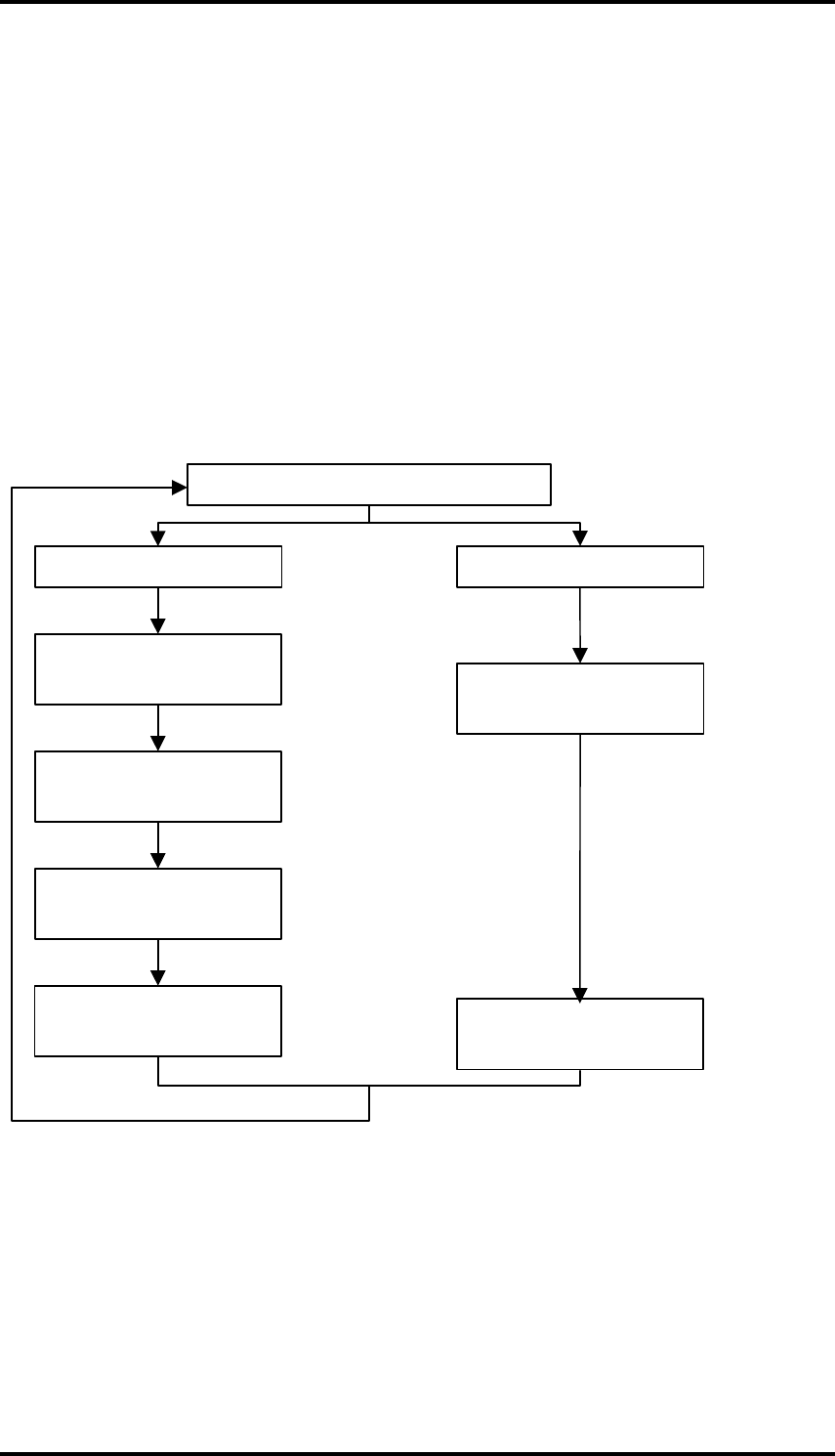
Chapter 4 Software Development
page 4-30
pointer as necessary for string input.
If the character is a carriage return, the function echoes both it and a line feed back to the terminal
emulator and stores the latter in memory instead.
The function repeats the above cycle the number of times specified by the count argument to the
read() function. The compiler automatically determines this count from the standard I/O library
function calling read().
The echo portions of the function are there to provide visual feedback when testing the firmware
from the personal computer keyboard. If the user application program does not need this feedback,
echoing can be dropped.
(2) write() function
Figure 4.5.4 gives a flowchart for function operation.
Read first character from string
Character is line feed
Character is not line feed
Write character to
transmit buffer
Transmit character in
transmit buffer
Write carriage return to
transmit buffer
Transmit character (CR)
in transmit buffer
Write character (LF) to
transmit buffer
Transmit character (LF)
in transmit buffer
Figure 4.5.4. write() Operation
The control flow is slightly more complicated than that for read(), but the entire operation can be
described in a single sentence: The function reads a character from the buffer and transmits it,
inserting a carriage return into the output stream before a line feed.
The function repeats the above cycle the number of times specified by the count argument to the
write() function. The compiler automatically determines this count from the standard I/O library
function calling write().


















